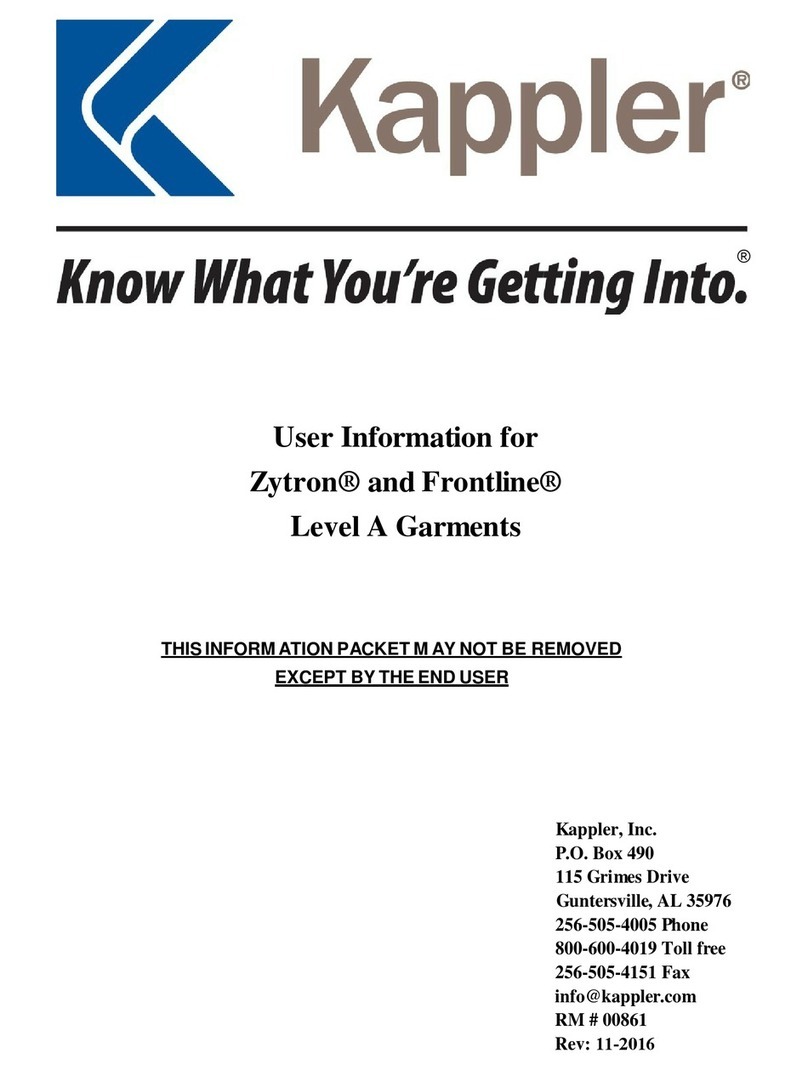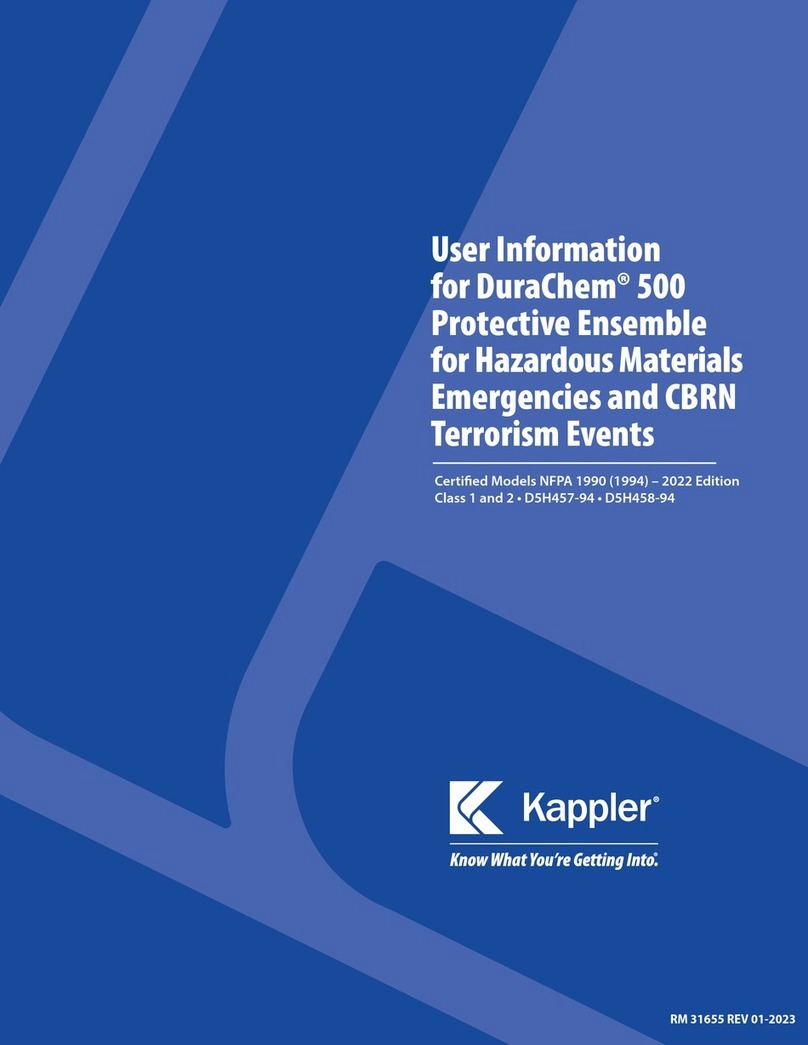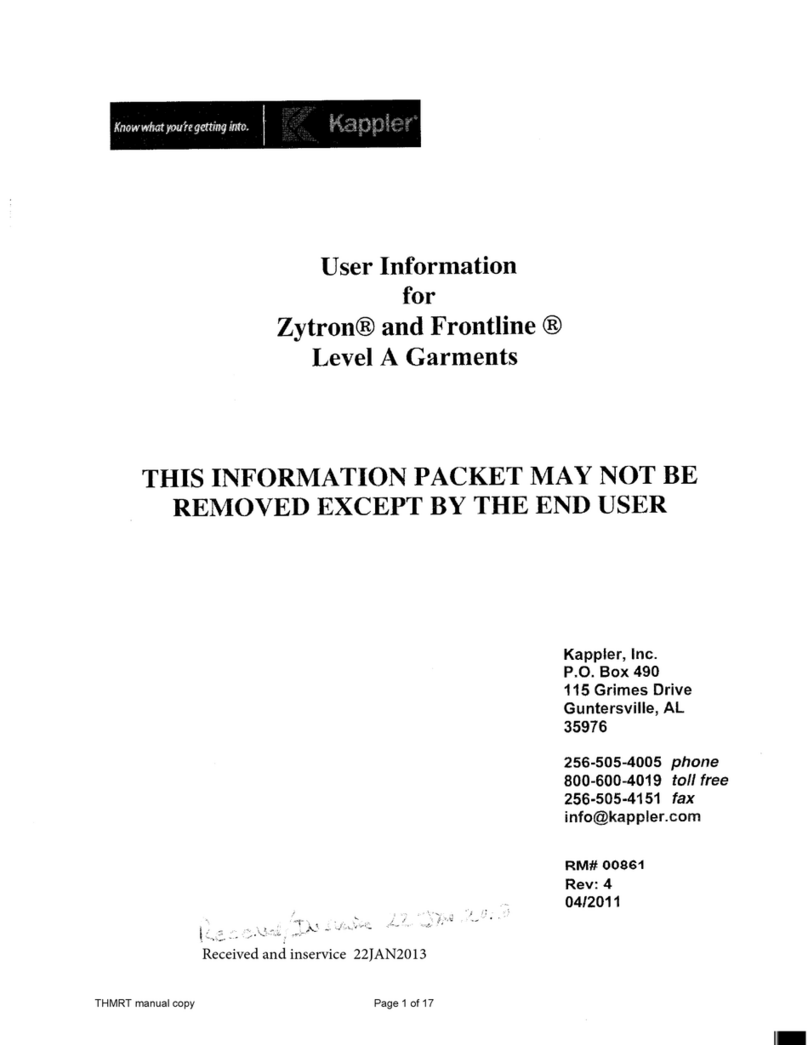
CONTENTS
Safety Considerations.............................................................................................................5
Safety Symbols used in this manual....................................................................................5
Warnings and Limitations ....................................................................................................... 6
Additional Equipment ������������������������������������������������������������������������������������������������������������������������������7
Chemical Permeation Data ������������������������������������������������������������������������������������������������������������������ 9
Static Electricity����������������������������������������������������������������������������������������������������������������������������������������� 9
Avoid Continuous Exposure����������������������������������������������������������������������������������������������������������������10
Inspection of Garment ............................................................................................................11
Full Visual Inspection ..............................................................................................................11
Returning the Garment ..........................................................................................................12
Storage������������������������������������������������������������������������������������������������������������������������������������������������������� 13
Visor Anti-fog Solution...........................................................................................................13
Closure Lubricants ..................................................................................................................13
Marking Recommendations and Restrictions ..................................................................14
Recommended Undergarments..........................................................................................14
Sizing Considerations ............................................................................................................14
Donning the Garment (Z3H427 92, Z3H432 92 and Z3H437 92).............................14
Dong the Garment (Z3H427 92, Z3H432 92 and Z3H437 92) ...............................16
Donning the Garment (Z3H428 92 and Z3H426 92) ....................................................16
Dong the Garment (Z3H428 92 and Z3H426 92) ......................................................18
Donning the Garment (Z3H576 92, Z3H577 92 and Z5H577 92) .............................19
Dong the Garment (Z3H576 92, Z3H577 92 and Z5H577 92) ...............................21
Donning the Garment Z3H579 92.................................................................................... 22
Dong the Garment Z3H579 92.......................................................................................24
Interface Issues.......................................................................................................................24
Decontamination and Cleaning of Chemical and Biological Contamination ........ 25
Decontamination before Reuse��������������������������������������������������������������������������������������������������������26
Maintenance and Cleaning����������������������������������������������������������������������������������������������������������������26































